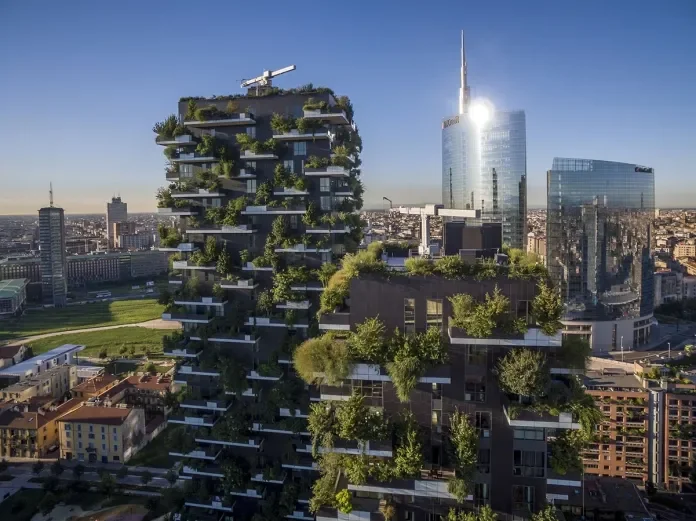Introduction:
Architecture, as an art form and functional discipline, encompasses a myriad of elements that harmonize to create spatial experiences. Among these elements, “enclosure” stands as a fundamental concept, shaping the way we perceive and interact with built environments. This discourse endeavors to delve deep into the essence of enclosure in architecture, unraveling its multifaceted nature, significance, and manifestations across different architectural styles and contexts.
Understanding Enclosure in Architecture
1.Defining Enclosure
Enclosure in architecture refers to the creation of bounded spaces delineated by walls, roofs, and other architectural elements.
It encompasses both physical and perceptual boundaries that define and shape spatial experiences.
2.The Duality of Enclosure
Enclosure embodies a duality wherein it provides a sense of shelter, security, and privacy while simultaneously establishing a connection between the built environment and its surrounding context.
This duality is intrinsic to architectural design, balancing the need for protection and openness.
The Significance of Enclosure
1.Spatial Definition
Enclosure plays a pivotal role in defining spatial boundaries within architectural compositions, delineating areas for specific functions and activities.
It contributes to the organization and hierarchy of spaces, guiding circulation and facilitating intuitive navigation within built environments.
2.Environmental Control
Enclosure serves as a barrier against external elements such as weather, noise, and pollution, enabling occupants to regulate internal environmental conditions.
Through strategic placement of apertures and insulation, architects can optimize natural light, ventilation, and thermal comfort within enclosed spaces.
3.Psychological Impact
The quality of enclosure profoundly influences the psychological well-being of occupants, evoking feelings of security, comfort, and intimacy.
Thoughtfully designed enclosures can foster a sense of belonging and identity, enhancing the overall human experience within architectural settings.
Manifestations of Enclosure in Architectural Design
1.Traditional Enclosure
Traditional architectural styles often prioritize solid, monolithic enclosures characterized by thick walls, small openings, and intimate interior spaces.
Examples include medieval castles, vernacular dwellings, and historic religious structures, where enclosure symbolizes strength, permanence, and cultural identity.
2.Modernist Exploration
Modernist architects challenged conventional notions of enclosure, embracing transparency, lightness, and spatial fluidity in their designs.
Pioneering figures like Le Corbusier and Ludwig Mies van der Rohe employed glass facades, open floor plans, and minimalist aesthetics to redefine the relationship between interior and exterior spaces.
3.Contemporary Interpretations
Contemporary architecture embraces a diverse range of approaches to enclosure, reflecting evolving societal values, technological advancements, and environmental concerns.
From parametrically designed facades to adaptive reuse projects, architects explore innovative ways to balance enclosure with notions of sustainability, inclusivity, and contextual responsiveness.
The Evolution of Enclosure in Architectural History
1.Ancient Origins
The concept of enclosure dates back to ancient civilizations, where primitive structures provided rudimentary shelter and protection against natural elements.
Ancient Egyptian temples, Mesopotamian ziggurats, and Roman villas exemplify early architectural expressions of enclosure, rooted in religious, social, and functional imperatives.
2.Medieval Fortifications
The Middle Ages witnessed the proliferation of fortified enclosures, such as castles, citadels, and walled cities, designed to withstand external threats and assert territorial control.
These structures served as symbols of power, authority, and social hierarchy, shaping the geopolitical landscape of the time.
3.Modernist Innovations
The advent of modernism in the 20th century ushered in a paradigm shift in architectural discourse, challenging traditional notions of enclosure and spatial organization.
Architects like Frank Lloyd Wright, with his organic architecture, and Walter Gropius, with the Bauhaus movement, reimagined enclosure as dynamic, adaptive, and responsive to human needs and aspirations.
Conclusion:
Enclosure, as a fundamental principle in architecture, transcends mere physical boundaries to encompass broader notions of spatial experience, environmental control, and cultural expression. Its evolution over time reflects the ever-changing dynamics between society, technology, and the built environment. By understanding the essence of enclosure and its manifold manifestations, architects can continue to innovate and enrich the fabric of our built world, fostering meaningful connections between individuals and their surroundings.




